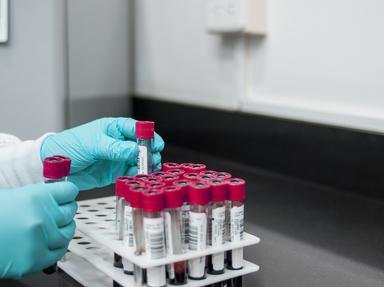Quiz Answer Key and Fun Facts
1. Which of the following is the only isomer of butane, and is also referred to as isobutane?
2. Which of the following is not a possible isomer of hexane?
3. How many carbon atoms does 3,4-dimethyloctane have?
4. Which of the following hydrocarbons has 9 carbon atoms?
5. How many carbon atoms would be in 3,5-diethyl-undecane?
6. Which of the following straight-chained alkanes has the most isomers?
7. Which of the following hydrocarbons has more than 20 carbon atoms?
8. 2,3-dipropylnonadecane has fewer than 23 carbon atoms.
9. Which of these isomers cannot exist?
10. Which of the following is an isomer of nonadecane?(C19H40)
Source: Author
dim_dude
This quiz was reviewed by FunTrivia editor
crisw before going online.
Any errors found in FunTrivia content are routinely corrected through our feedback system.

